Lunar New Year is the most important festival for the Chinese, Korean and Vietnamese, as well as their ethnic diaspora around the world. The joyous vibe would stir during the final weeks in the Lunar calendar year; with a flurry of preparations leading up to New Year’s Eve, and crescendos on the first day till the third of the new spring for Koreans. For the Chinese and Vietnamese, celebrations would continue till the 15th day, to commemorate the First Full Moon of the year.
Lunar New Year’s Eve
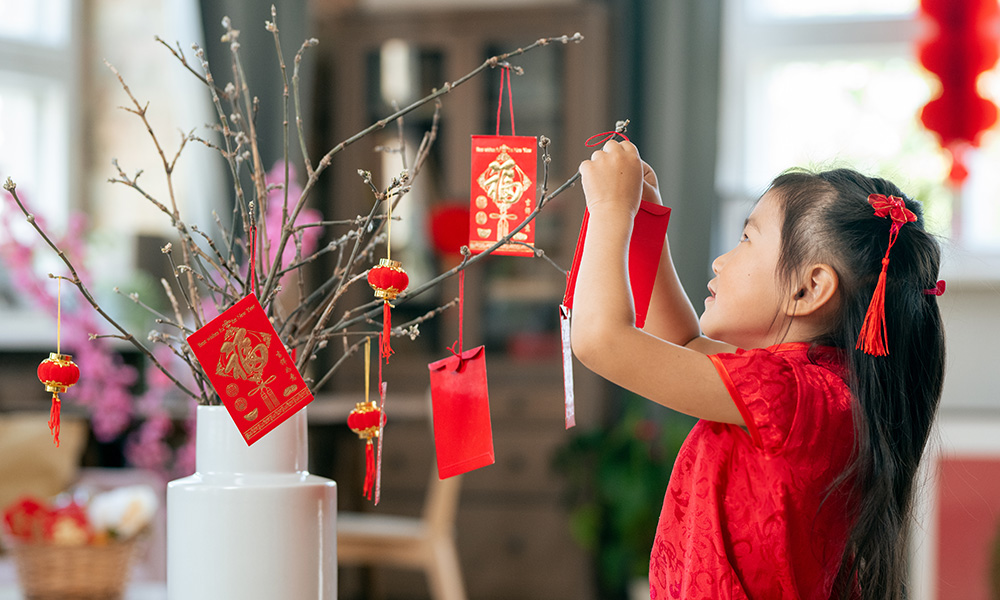
Red lanterns, calligraphic well-wishing banners and other vibrant auspicious décor adorn the streets and homes, weeks before Lunar New Year’s Eve. Students and workers in cities and other countries travel back to hometowns, and everyone goes shopping, clears debts, concludes businesses, and spring clean abodes.
On the Eve, traditional foods to usher in the new year are prepared and stored. As the evening approaches, altars to honour ancestors are set up in homes and temples. Families gather round for reunion dinner with a tableful of sumptuous, tasty dishes. After that, long chats with tea and snacks as we countdown to the New Year. Some may visit temples and stay for the festivities and rituals throughout the night.
Upon midnight, fireworks bloom and blossom across the skies, and everyone cheers a hearty welcome to the Lunar New Year. The Chinese would include red firecrackers at the front of their homes; to chase away the mythic Nian beast, evil spirits and bad luck of the past year, while inviting the God of Prosperity.
Day 1 to Day 3 of Lunar New Year
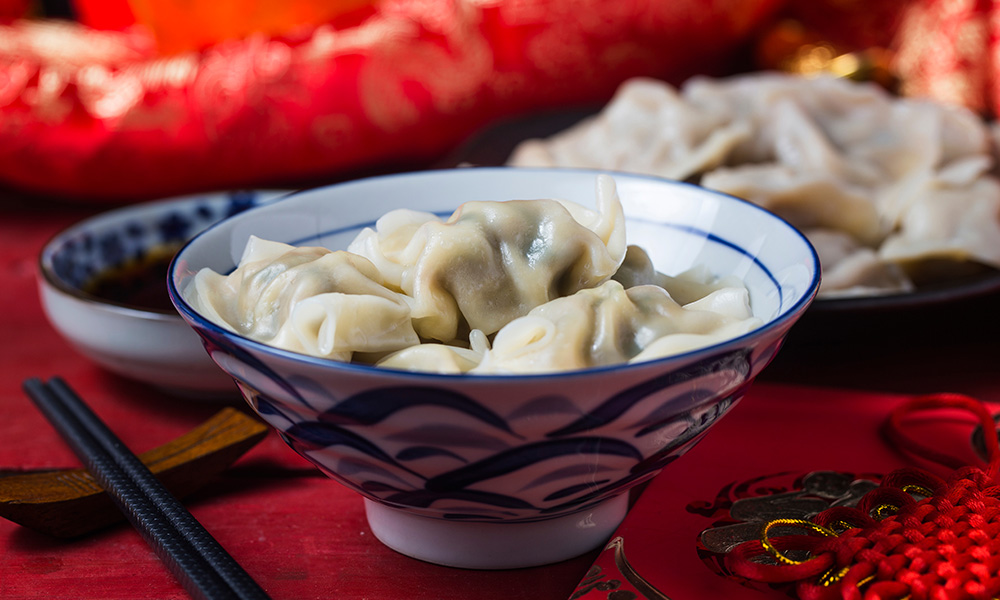
The first day is celebrated with close family and begins with a breakfast of New Year foods. The Chinese savour the meaty Jiaozi for luck, blessings and the warmth of home. Tteokguk rice cake soup brings new hope and good health for the Koreans. Nem Ran spring rolls is a must for the Vietnamese, every munch represents starting anew. Vietnamese Bo Kho braise beef is savoured for lunch, imbued with familial love and well-wishes.
The first day is spent at home with traditional rituals to honour ancestors, giving children red packets of money for good luck and hope; as well as festive games, merrymaking and family meals.
The second day of Lunar New Year is celebrated among extended family members, with home visits bearing gifts and well wishes, and lots of auspicious snacks. Lion Dance, Dragon Dance and various cultural performances bustle in the streets and plazas of towns and cities.
The third day is celebrated among friends, with home visits, outings to Lunar New Year markets, temple visits, and banquet gatherings. Typically, the festival concludes here for Koreans, while Vietnamese and Chinese celebrations carry on.
Day 7 of Lunar New Year: Human Day
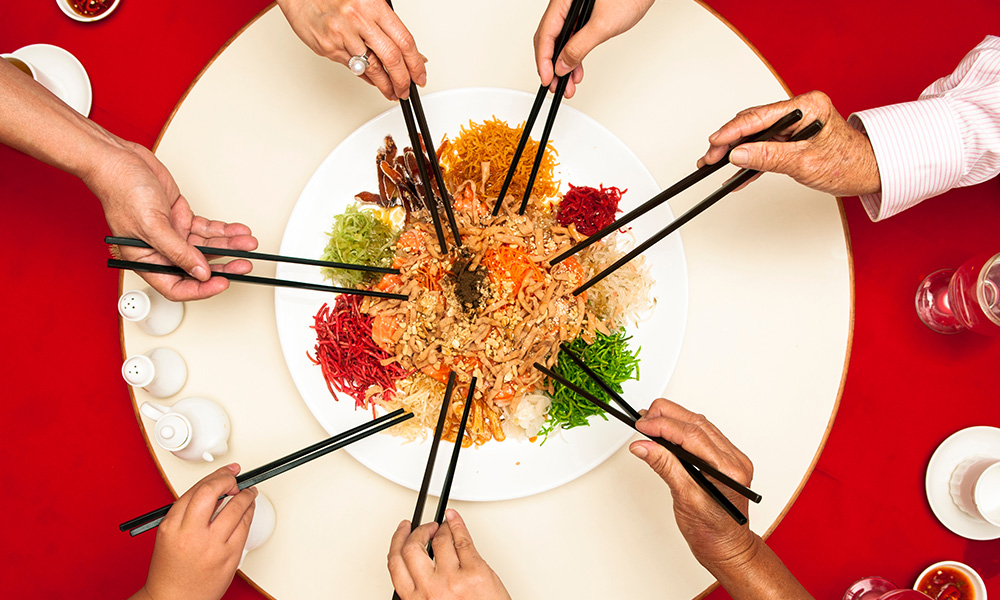
According to Chinese myth, the Great Goddess of Creation, Nuwo, took six days to make the animals of the world; and on the seventh day, she created humankind. Thus, Day 7 of Lunar New Year is Ren-Ri or Human Day. A festival that has endured for over 2,000 years, and celebrates everyone’s birthday.
Human-shaped emblems cut from coloured paper is a traditional adornment in homes. Women gather for outings and reunions among friends, while hikers go on mountain walks. Giving birth on this day is also considered extra fortuitous.
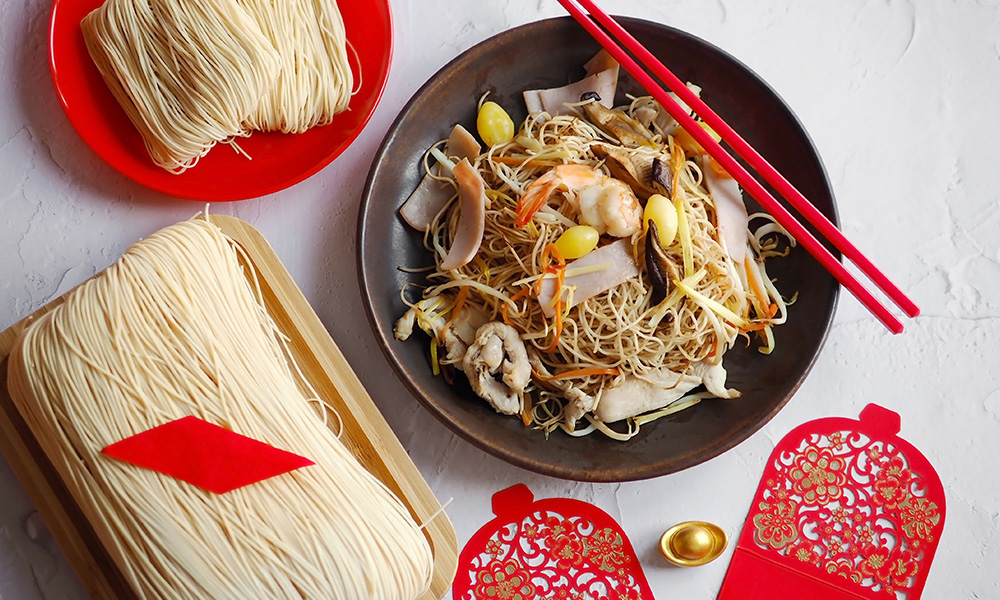
Special celebration foods include Longevity Noodles, Yu Sheng shared-toss salad, Pun Choy packed with meats, seafood, mushrooms and other goodies; as well as the Qi Bao Geng, with seven auspicious greens and rice noodles in a warm savoury broth.
Night 9 of Lunar New Year: Bai Tian Gong (Praying to Jade Emperor)
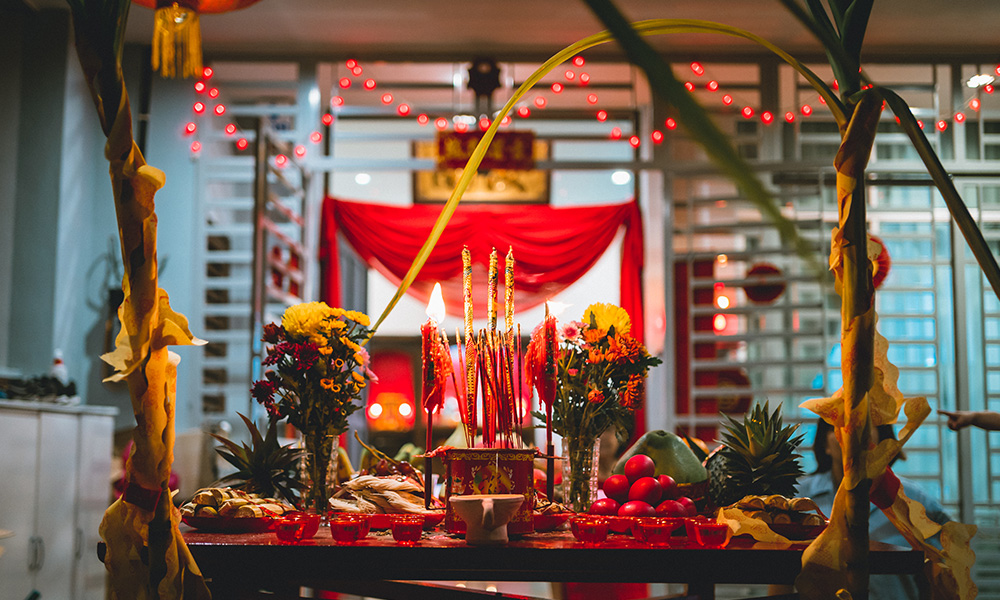
According to Chinese Fujian myth, Day 9 of Lunar New Year is the Heavenly Jade Emperor’s (the first god in Chinese culture) birthday—also named the Bai Tian Gong (“Praying to Jade Emperor”) festival. The day is a major traditional celebration for the people of Fujian and Hainan, China, as well as the Hokkien diaspora in Malaysia, Singapore and elsewhere around the world.
Besides temple rituals to honour Tian Gong throughout the day, families and communities would also build a lavish altar at night, filled with a feast of auspicious foods and drinks as offerings. These yummies are also shared in a joyous dinner feast. At the stroke of midnight, boisterous fireworks erupt across neighbourhoods, and revellers pray for good health and fortune.
Day 15 of Lunar New Year: Lantern Festival
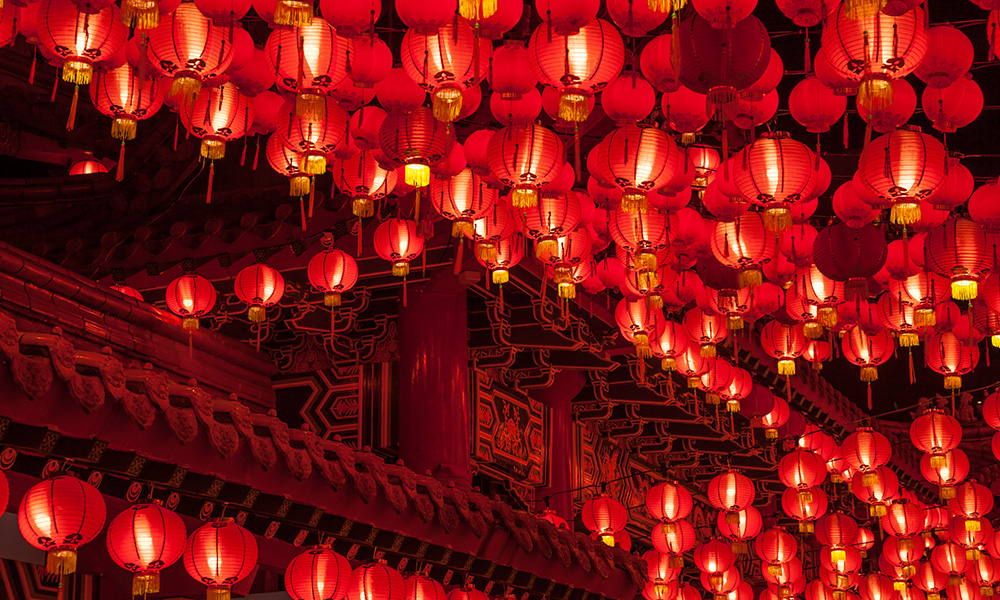
Lunar New Year celebrations end on the 15th Day with the Chinese Lantern Festival, Chap Goh Mei for the Malaysian Hokkien community, and the Vietnamese Tết Nguyên Tiêu. Festive markets, cultural performances and vibrant lanterns grace the towns, cities and neighbourhoods all through the day, till the first full moon of the year shines in the night.
The Chinese savour sweet chewy Yuanxiao rice balls that represent reunion and familial love. The Vietnamese version is known as Chè Trôi Nước and carries the same auspicious meaning.
For the Malaysian Hokkien Chinese, Chap Goh Mei is celebrated with thanksgiving prayers and family gatherings. The day is also Chinese Valentine’s Day with a unique ritual: unmarried girls would throw mandarin oranges into ponds or rivers for potential suitors to pick up.
Have a Prosperous Lunar New Year!
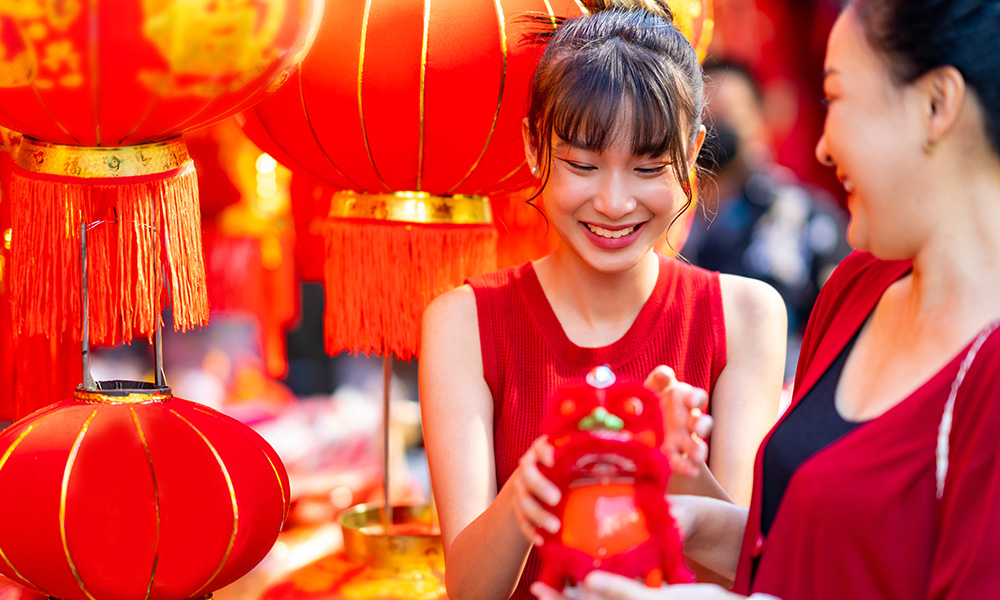
Australian Asian communities celebrate Lunar New Year as well. Join the festivities with auspicious greetings and traditional symbols that bring good luck!


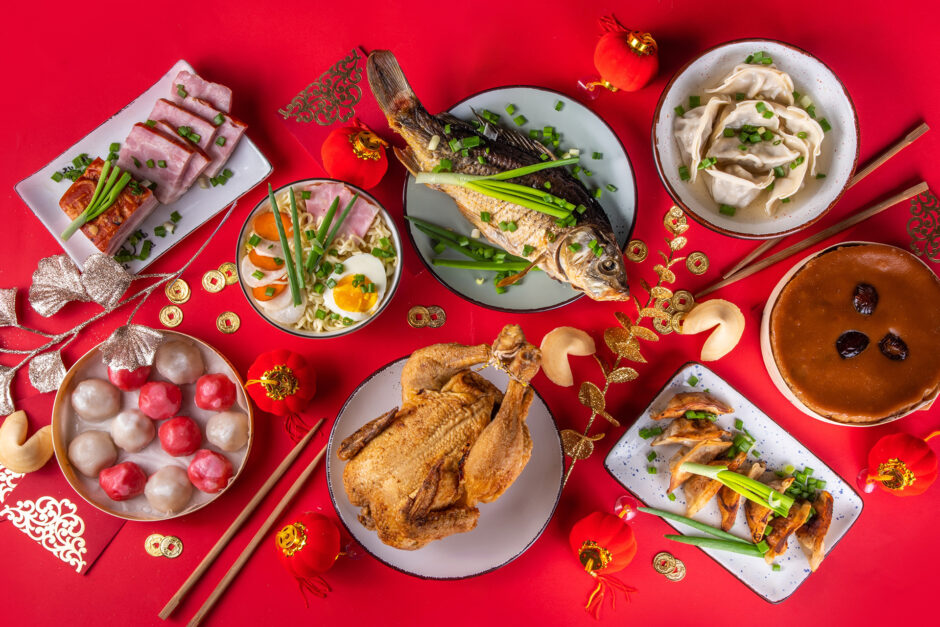



You must be logged in to post a comment.